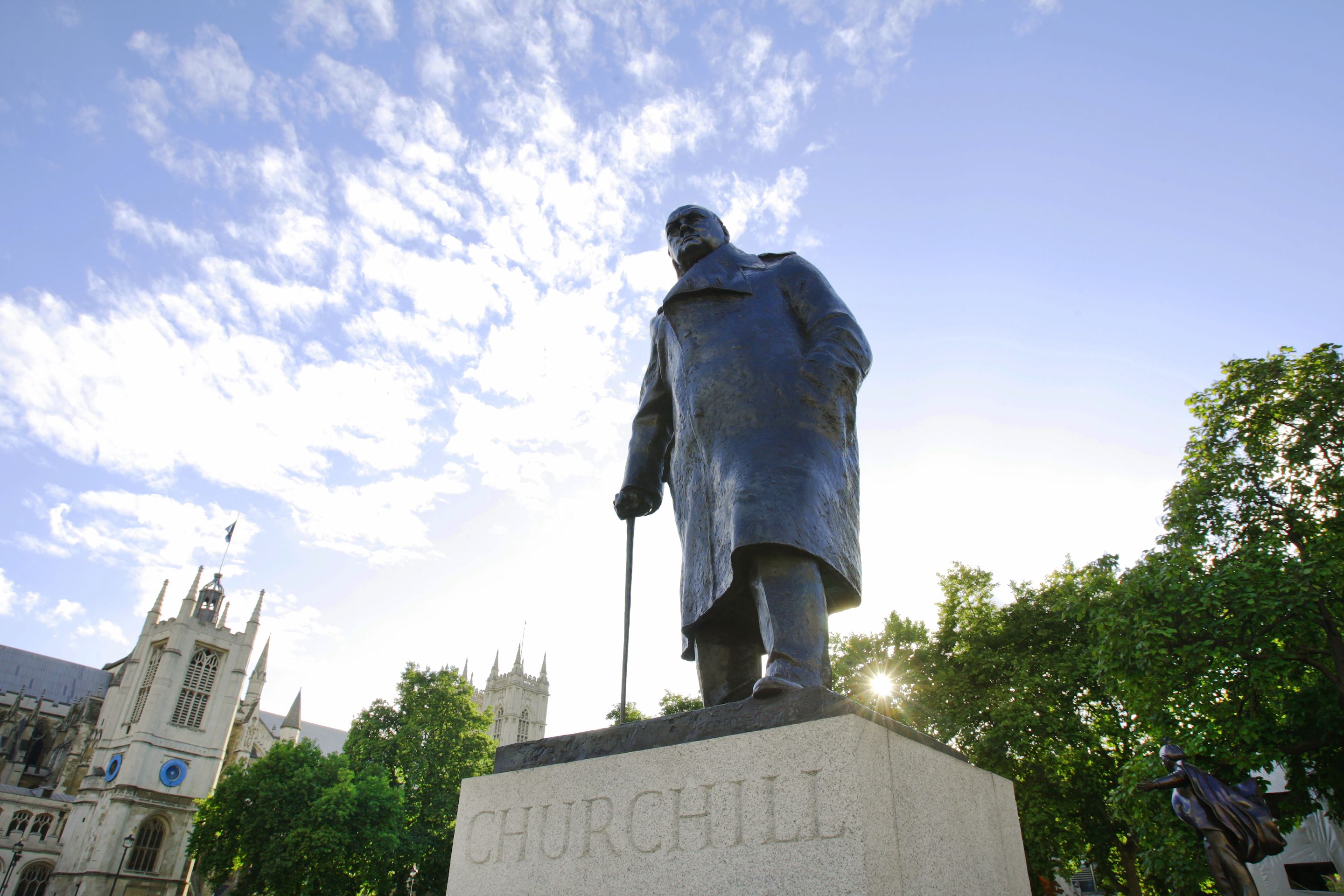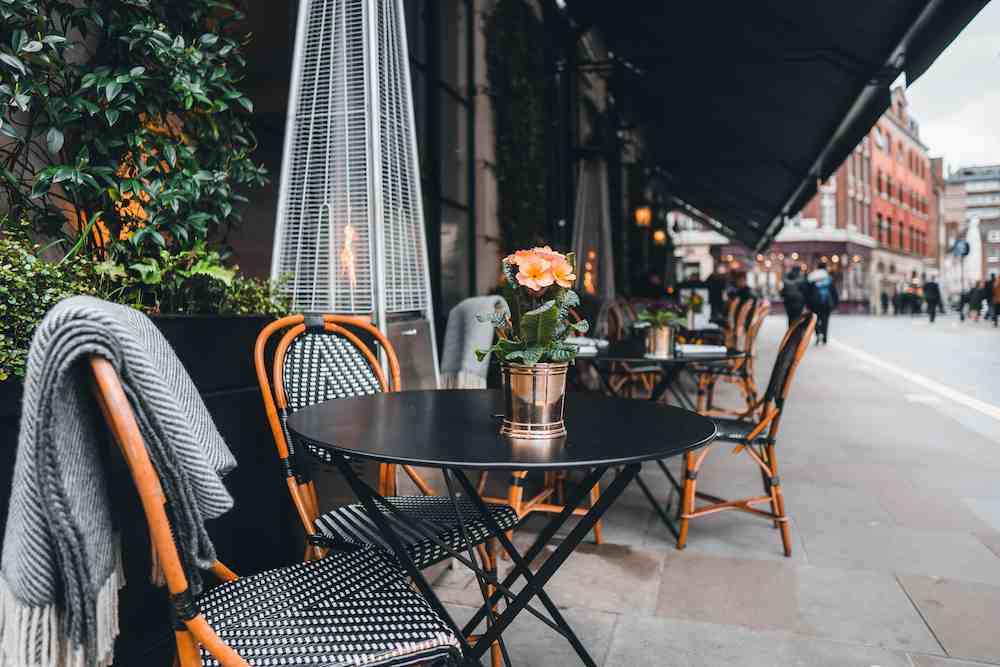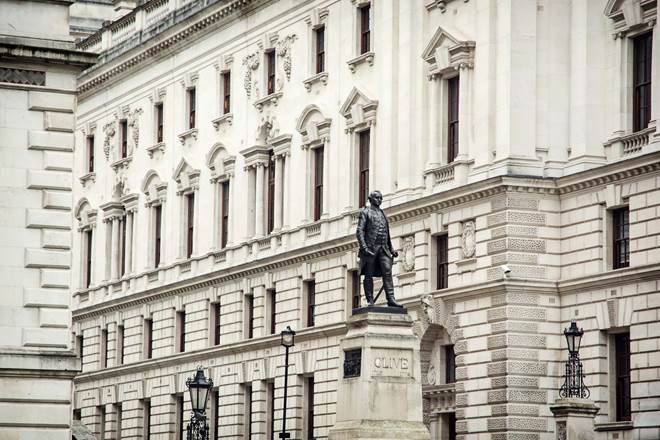Located in Her Majesty’s (HM) Treasury building in the heart of Westminster, the Churchill War Rooms served as a critical intelligence area. Many important decisions about the war were made here.
The Churchill War Rooms are now part of the Imperial War Museum London. Visitors can head underground to explore the maze of offices, living headquarters and conference rooms dotted throughout this historic site.
What’s in this guide?
- Things to see at the Churchill War Rooms
- Churchill War Rooms history and facts
- Restaurants and bars near the Churchill War Rooms
- Opening times and ticket prices
How to get to the Churchill War Rooms
The Churchill War Rooms are in central London, next to St James’s Park and not far from 10 Downing Street (the Prime Minister’s residence). Getting to the Churchill War Rooms is easy thanks to London’s public transport network, including buses, trains and underground transport system (tube).
The closest train stations to the Churchill War Rooms are Charing Cross, Waterloo and Victoria. To reach the Churchill War Rooms by train, ride to any of these stations and enjoy the short walk to your destination. Charing Cross station is a 9-minute walk away, while Waterloo station and Victoria station are a 20-minute walk away.
The easiest way to get to the Churchill War rooms is by tube if you're already in London. London is home to around 250 tube stations and trains run every 2 minutes. The nearest tube stations to the Churchill War Rooms are St James’s Park on the District (green) and Circle (yellow) lines and Westminster on the District, Circle and Jubilee (silver) lines.
Things to see at the Churchill War Rooms

There’s plenty to discover at the Churchill War Rooms, so make sure you set aside at least 2 and a half hours for your visit. The site comprises the Cabinet War Rooms and the Churchill Museum, with fascinating artefacts to help you learn more about World War II.
Cabinet War Rooms
The Cabinet War Rooms are a unique underground complex, made up of a Map Room, a Transatlantic Telephone Room, a Cabinet Room, a BBC Broadcast Room and Churchill’s Bedroom. These rooms were once occupied by military strategists, government ministers and Prime Minister Winston Churchill.
The Cabinet Rooms remain just as they were during 1945, their last year of use. Walk the winding corridors and get a feel for what life was like during the tense days of the war.
Cabinet War Rooms: Map Room
The Map Room was constantly staffed by an officer from the Army, Royal Navy and Royal Air Force and was used 24 hours a day. The movement of armies was tracked day and night, and critical information was collated for King George IV and Churchill. Witness the row of multicoloured telephones, look at the historical charts and notice the markers left behind on the map wall.
Cabinet War Rooms: Churchill’s Bedroom
Churchill’s Bedroom was the most luxurious room in the complex, fitted wall to wall with carpet to signify the Prime Minister’s seniority. Here, Churchill worked, slept and made his iconic broadcasts.
Walk around this room and spot exciting features such as the circles on the map opposite Churchill’s bed that represented potential landing sites for a German invasion.
Cabinet War Rooms: Cabinet Room
The Cabinet Room was where Churchill and his key ministers worked long hours, making crucial decisions about the war and consulting with the heads of the Army, Navy and Royal Air Force. The Cabinet Room was heavily guarded during top-secret meetings, and entry into the room was blocked. See the scratches on Churchill’s Chair in the centre of the room – evidence of just how tense the meetings could become.
The Churchill Museum
Step inside the Churchill Museum and discover more about Churchill’s 90-year life, from his military career to his time as British Prime Minister. Inside the Churchill War Rooms museum, you can see personal objects such as Churchill’s paintings and favourite cigars and hear extracts from his famous wartime speeches. Discover Churchill’s Lifeline – a 15-metre-long table featuring documents and images that detail various points throughout this historical figure’s life.
The Imperial War Museum
The Churchill War Rooms are one of the five branches of the Imperial War Museum London, the world’s leading museum of war and conflict. The Imperial War Museum is only a short tube ride from the Churchill War Rooms. It features unmissable exhibitions such as First World War Galleries and Witnesses to War.
General admission is free. However, charges may apply for specific exhibitions. To get to the Imperial War Museum from the Churchill War Rooms, take the tube from Westminster station and travel on the Jubilee (silver) line to Waterloo station. From there, walk 13 minutes to the museum.
Churchill War Rooms history and facts
Plans for the Cabinet War Rooms were commissioned in 1938, just before World War II. In 1984, Imperial War Museum opened these rooms to the public. They’re now one of the most visited historic sites across London.
Preparing for a second world war
During the 1930s, fears of a second world war began to rise. The government realised that they needed to build a complex of cabinet war rooms to house the Prime Minister during air raids. These rooms would also be necessary to continue work should 10 Downing Street be damaged or destroyed.
Plans had been put in place to evacuate Churchill as early as the 1920s. Concerns grew that people would feel abandoned if the Prime Minister and his government left London. In 1938, the HM Treasury building was selected as the emergency shelter.
The Cabinet War Rooms then
HM Treasury building already featured a basement, which was expanded with a maze of tunnels to prepare for the war. A solid concrete roof was also added for protection against bombs. The Cabinet War Rooms became fully operational in August 1939. From these rooms, Churchill and his cabinet worked throughout the war.
115 Cabinet Meetings were held in the complex, and the last meeting took place in March 1945. By August, a few days before the end of the war, the lights in the Map Room were turned off for the first time in six years.
The Cabinet War Rooms now
The Cabinet War Rooms remained dormant for 80 years after being closed in 1945. In 1984, the Imperial War Museum opened the rooms to the public for the first time. In 2005, Her Majesty the Queen opened the Churchill Museum.
Restaurants and bars near the Churchill War Rooms

The Churchill War Rooms are located in central London, close to many outstanding restaurants and bars. If you fancy a quick pit stop during a day of sightseeing, visit one of our recommended eateries below.
Switchroom Cafeteria
Inside the Churchill Museum, you’ll find a small café, where you can stop for a coffee and a piece of cake during your tour of the Churchill War Rooms.
One Twenty One Two Restaurant
Located just minutes from the Churchill War Rooms, One Twenty One Two Restaurant is the perfect place to enjoy delicious food. This restaurant is one of London’s renowned fine dining spots and boats fresh, seasonally inspired dishes and impeccable service. One Twenty One Two is on the ground floor of The Royal Horseguards Hotel. Its name is inspired by the famous telephone number, 1212, used by Scotland Yard.
The Red Lion
Nestled on the corner of Parliament Street, The Red Lion pub is a Grade II listed building only a stone’s throw from 10 Downing Street. The pub has been a favoured spot of various members of Parliament over the years and is a great place to enjoy a meal or a pint.
The Red Lion specialises in handmade pies served with mash and plenty of gravy. You can also choose from a range of tasty puddings, including chocolate brownies and sticky toffee. The menu changes regularly to reflect the seasonality of ingredients.
Wesley’s Café
Close to Central Hall, Westminster, Wesley’s Café is a great place to rest during a busy day of sightseeing. This delightful eatery serves a selection of hot and cold beverages, salads, snacks and sandwiches. It’s only a 4-minute walk from the Churchill War Rooms. From here, you can visit other top attractions such as Westminster Abbey and the Houses of Parliament, both of which are only a short distance from the café.
The English Rose Café and Tea Shop
This vintage café is a 16-minute walk from the Churchill War Rooms and a great spot to enjoy a cup of tea before visiting more of London’s landmarks. Choose from a selection of sandwiches, cakes, pastries and salads.
The English Rose also serves an extensive range of breakfast dishes, including a traditional full English breakfast. From here, you can visit Buckingham Palace, only a 7-minute walk away.
Opening times and ticket prices
The Churchill War Rooms are open Wednesday to Sunday, 09:30 to 18:00. The last entry is at 17:00. Tickets can be booked online.
|
|
Churchill War Rooms ticket (before April 2022) |
|
Adult (16 to 64) |
£25.00 |
|
Child (5 to 15) |
£12.50 |
|
Under 5 |
Free |
|
Concession |
£22.50 |
|
Carer |
Free |
| Imperial War Museum member |
Free |
From April 2022, ticket prices will be as follows:
|
|
Churchill War Rooms ticket (after April 2022) |
|
Adult (16 to 64) |
£26.35 |
|
Child (5 to 15) |
£13.15 |
|
Under 5 |
Free |
|
Concession |
£23.60 |
|
Carer |
Free |
| Imperial War Museum member |
Free |
Taking the train to London?
Planning on spending some time in the capital of England and want more information on travelling to London by train? Start your journey now! Travelling to London by train is simple due to the high-speed rail connections operated by 28 major train companies across the UK. You can travel to London from some of the most popular cities in the UK, including Bristol to London (1h 35m), Birmingham to London (1h 21m) and Oxford to London (47m).
Need more information about travelling to London by train? Check out our dedicated page to trains to London.
